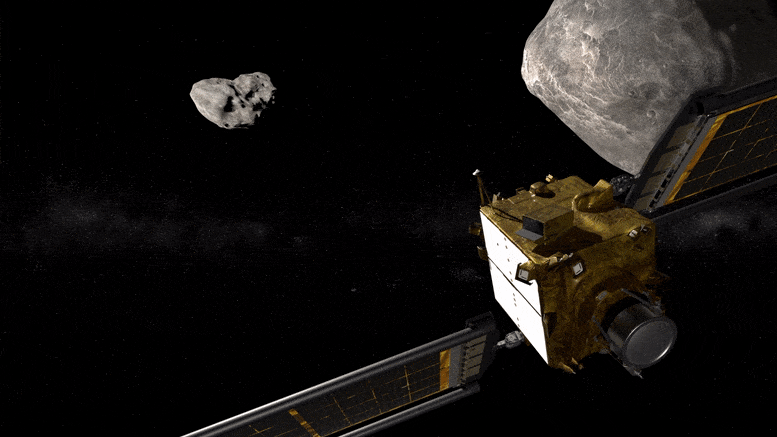
DART Animation. Credit: NASA/Johns Hopkins APL
DART Team Confirms Orbit of Targeted Asteroid
Using some of the world’s most powerful telescopes, the DART investigation team completed a six-night observation campaign last month to confirm earlier calculations of the orbit of Dimorphos—DART’s asteroid target. Dimorphos is in orbit around its larger parent asteroid, Didymos. These observations confirm where the asteroid is expected to be located at the time of impact. DART, which is the world’s first attempt to change the speed and path of an asteroid’s motion in space, tests a method of asteroid deflection that could prove useful if such a need arises for planetary defense in the future.
“The measurements the team made in early 2021 were critical for making sure that DART arrived at the right place and the right time for its kinetic impact into Dimorphos,” said Andy Rivkin, the DART investigation team co-lead at the Johns Hopkins University Applied Physics Laboratory (APL) in Laurel, Maryland. “Confirming those measurements with new observations shows us that we don’t need any course changes and we’re already right on target.”
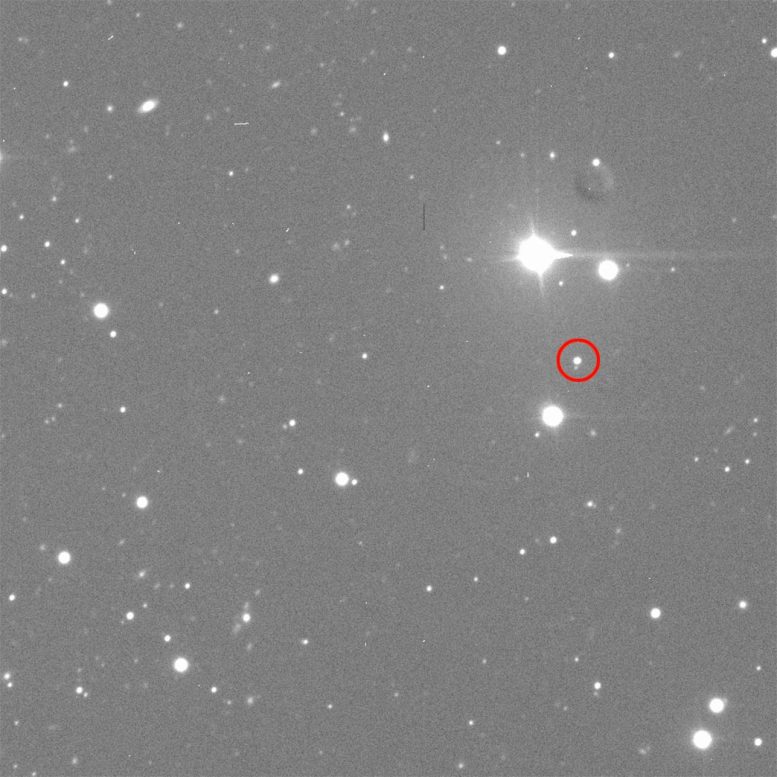
On the night of July 7, 2022, the Lowell Discovery Telescope near Flagstaff, Arizona captured the asteroid Didymos. Credit: Lowell Observatory/N. Moskovitz
Understanding the dynamics of Dimorphos’ orbit, however, is important for reasons beyond ensuring DART’s impact. If DART succeeds in altering Dimorphos’ path, the moonlet will move closer toward Didymos, decreasing the time it takes to orbit it. Although measuring that change is straightforward, scientists need to confirm that nothing other than the impact is affecting the orbit. This includes subtle forces such as radiation recoil from the asteroid’s Sun-warmed surface, which can gently push on the asteroid and cause its orbit to change.
“The before-and-after nature of this experiment requires exquisite knowledge of the asteroid system before we do anything to it,” said Nick Moskovitz, an astronomer with Lowell Observatory in Flagstaff, Arizona, and co-lead of the July observation campaign. “We don’t want to, at the last minute, say, ‘Oh, here’s something we hadn’t thought about or phenomena we hadn’t considered.’ We want to be sure that any change we see is entirely due to what DART did.”
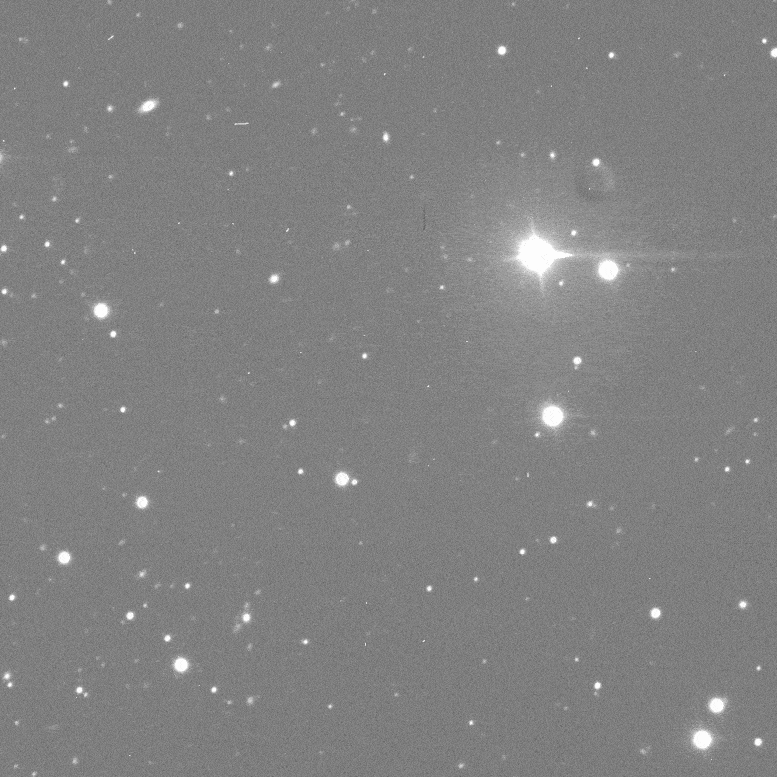
On the night of July 7, 2022, the Lowell Discovery Telescope near Flagstaff, Arizona captured this sequence in which the asteroid Didymos, located near the center of the screen, moves across the night sky. The sequence here is sped up by about 1,800 times. Scientists used this and other observations from the July campaign to confirm Dimorphos’ orbit and the anticipated location at the time of DART’s impact. Credit: Lowell Observatory/N. Moskovitz
In late September to early October, around the time of DART’s impact, Didymos and Dimorphos will make their closest approach to Earth in recent years. This will place them at approximately 6.7 million miles (10.8 million kilometers) away. Since March 2021 the Didymos system had been out of range of most ground-based telescopes because of its distance from Earth. However, early this July the DART Investigation Team employed powerful telescopes in Arizona and Chile — the Lowell Discovery Telescope at Lowell Observatory, the Magellan Telescope at Las Campanas Observatory and the Southern Astrophysical Research (SOAR) Telescope — to observe the asteroid system and look for changes in its brightness. These changes, called “mutual events,” occur when one of the asteroids passes in front of the other because of Dimorphos’ orbit, blocking some of the light they emit.
“It was a tricky time of year to get these observations,” said Moskovitz. In the Northern Hemisphere, the nights are short, and it is monsoon season in Arizona. In the Southern Hemisphere, the threat of winter storms loomed. In fact, just after the observation campaign, a major snowstorm hit Chile, prompting evacuations from the mountain where SOAR is located. This resulted in the telescope being shut down for close to ten days. “We asked for six half-nights of observation with some expectation that about half of those would be lost to weather, but we only lost one night. We got really lucky.”
In all, the team was able to extract from the data the timing of 11 new mutual events. Analyzing those changes in brightness enabled scientists to determine precisely how long it takes Dimorphos to orbit the larger asteroid. Thereby they are able to predict where Dimorphos will be located at specific moments in time, including when DART makes impact. The results were consistent with previous calculations.
“We really have high confidence now that the asteroid system is well understood and we are set up to understand what happens after impact,” Moskovitz said.
Not only did this observation campaign enable the team to confirm Dimorphos’ orbital period and expected location at the time of impact, but it also allowed team members to refine the process they will use to determine whether DART successfully changed Dimorphos’s orbit post-impact, and by how much.
In October, after DART has smashed into the asteroid, the team will again use ground-based telescopes around the world to look for mutual events and calculate Dimorphos’ new orbit. They are expecting that the time it takes the smaller asteroid to orbit Didymos will have shifted by several minutes. These observations will also help constrain theories that scientists around the world have put forward about Dimorphos’ orbit dynamics and the rotation of both asteroids.
Johns Hopkins APL manages the DART mission for NASA’s Planetary Defense Coordination Office as a project of the agency’s Planetary Missions Program Office. DART is the world’s first planetary defense test mission, intentionally executing a kinetic impact into Dimorphos to slightly change its motion in space. While neither asteroid poses a threat to Earth, the DART mission will demonstrate that a spacecraft can autonomously navigate to a kinetic impact on a relatively small target asteroid and that this is a viable technique to deflect an asteroid on a collision course with Earth if one is ever discovered. DART will reach its target on September 26, 2022.

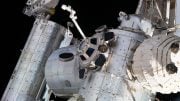


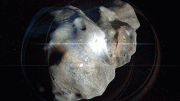
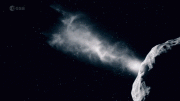

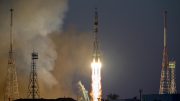

There is so much stuff moving around in that video. The obvious one in the middle is awesome to see but, I also see 3 other items flying around as well. Right center moving down. Top right moving right and top left moving down and right.
More Hollywood intervention